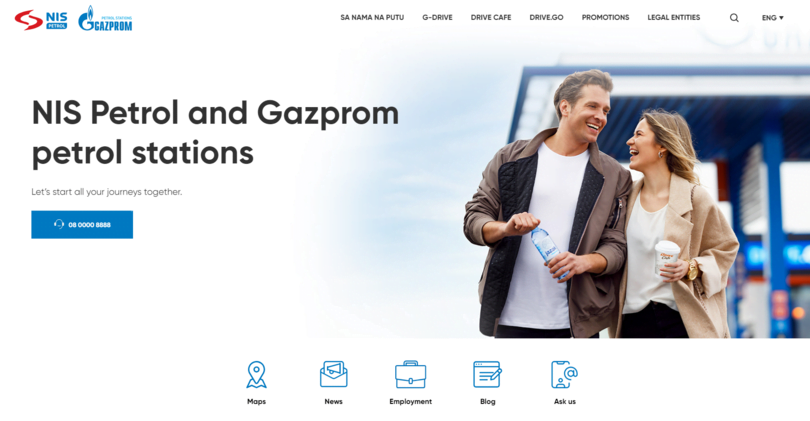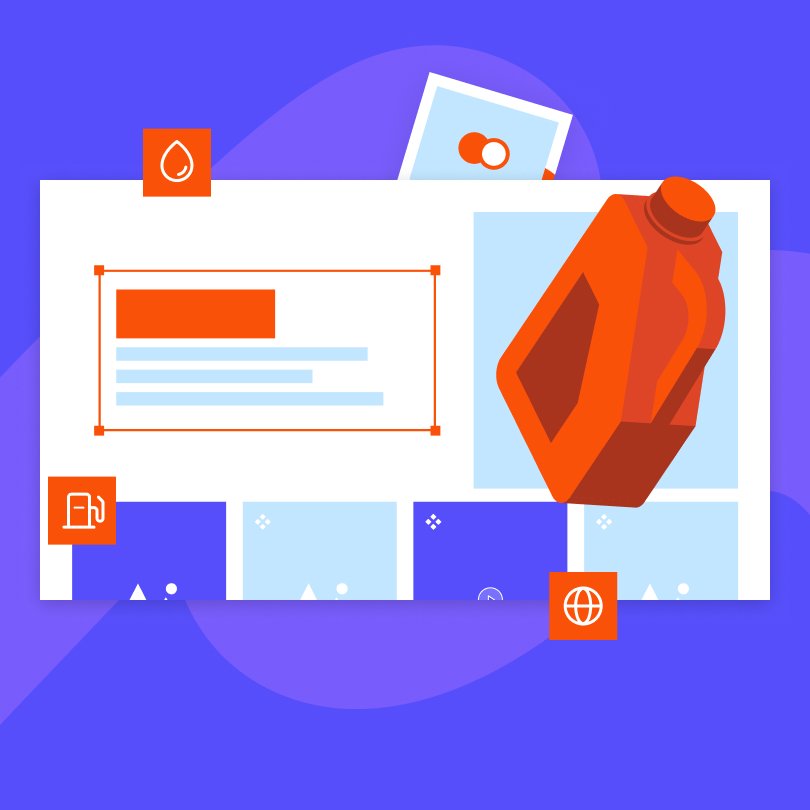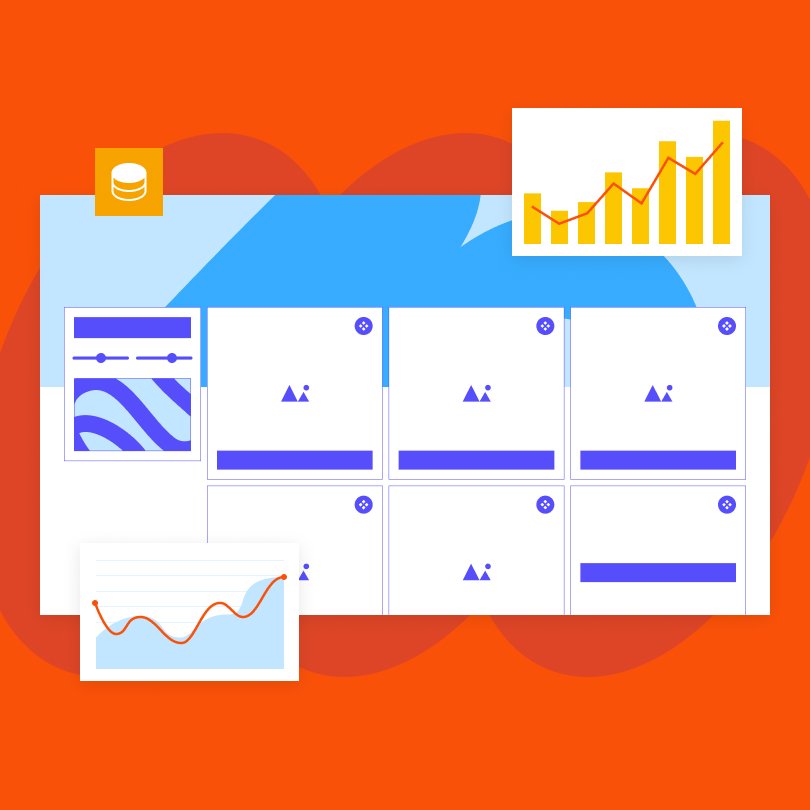High-quality oil and gas web design plays a significant role in how various stakeholders perceive your company. It's a part of your professional image, serving to instill trust in customers, partners, and investors.
Do it right, and you’ll demonstrate that you’re a professional and technologically savvy energy producer. Your website is another business tool that can help share announcements, attract skilled talent, and showcase your company’s capabilities. But it can also drive people away.
A polished and well-thought-out online presence is non-negotiable in this day and age, and you must use its full potential. That applies to every industry, including oil and gas.
How Does Oil and Gas Website Design Impact Your Company’s Success?
Unlike oil and gas, retail, hospitality, automotive design, and luxury goods are among the industries that often depend on striking visuals. On the other hand, networking, credibility, and stellar delivery are essential for energy production companies.
Yet, every industry exists in this visually driven world where digital platforms are often the first touchpoint with stakeholders. That means that, regardless of the quality of your service, you must adapt to the online context.
Even the tiniest details can affect your success and whether your customers and clients trust you. According to HubSpot, slow loading, non-responsive websites, bad navigation, and outdated design are all among the factors pushing a visitor to leave a site.
Oil and gas website design and development, therefore, impact whether your online presence speaks about the value you can bring to potential clients. Here are all the ways your web platforms affect your business performance:
- Corporate Branding and Image: A well-designed website is the digital face of your company. It can convey professionalism, reliability, and a commitment to environmental and social responsibility, which is crucial for maintaining a positive corporate image.
- Information Visibility: As an oil and gas company, you likely often release reports, publications, and updates related to your operations, sustainability efforts, and industry insights. Aesthetically pleasing and user-friendly designs make it easier for stakeholders to access and digest this information.
- Stakeholder Connections: If you manage a publicly traded oil and gas company, you use your website as a hub for investor relations. That’s critical for providing financial reports, stock information, and shareholder services. A well-designed investor relations section instills trust and confidence in investors.
- Accessibility: Potential clients and customers can reach you through your company’s contact information, such as address and phone number. Clean, separate contact pages allow them to fill out the necessary data and get in touch with you. However, these must be short, easy to find, and visually appealing to ensure clients don’t change their minds.
- Community Engagement: Oil and gas companies often engage with local communities. Your website can be a platform for sharing information about community projects, sustainability initiatives, and your company’s impact on the local area.
- Regulatory Compliance: Oil and gas websites can serve as repositories for compliance-related information and documentation, ensuring your company meets regulatory requirements.
- Recruitment: Every company in this industry requires a diverse workforce, from engineers to project managers. A professional website with an attractive careers section can help you attract top talent.
But how do you ensure your website design and development for oil and gas works to your advantage?
Key Elements of an Effective Oil and Gas Web Design
If you’ve decided to step up your game and improve your oil and gas website design, pay attention to the most significant elements of a stellar web design tailored to the oil and gas sector.
Professional Appearance
Be intentional with your oil and gas website and ensure every category and image blends well and makes sense. You need a website that exudes professionalism and reliability. A clean and modern design with a corporate color scheme can instill trust in visitors.
Mobile Responsiveness
According to Market Splash, mobile devices account for over 51 percent of the total web traffic in the U.S. Overlooking that fact could lead to alienating many opportunities and potential clients.
Given the global and often remote nature of the industry, the website must be responsive and optimized for mobile devices. That ensures accessibility for employees, clients, and stakeholders in the gas and oil field.
Here’s a bonus tip. If you haven’t already, consider developing an engaging mobile app that can help you boost your field operations and control your technician schedules, business communications, and customer data.
User-Friendly Navigation
Simplicity and clarity are paramount for an effective oil and gas web design. Visitors should easily find relevant information and navigate every page.
That requires a smooth and clean layout without too many elements and imagery. Otherwise, you risk losing possible customers because they couldn’t figure out your website.
Ensure people can quickly discover your company’s address, phone number, working hours, and schedule. Include information about operations, sustainability, investor relations, and other vital areas. Use readable and intuitive labeling for categories to make sure visitors know what to expect.
Security
Your website’s credibility depends on how secure and functional it is. Oil and gas companies often deal with sensitive data, including proprietary research, exploration findings, drilling data, geological information, operational plans, and financial data. A breach of this information could have far-reaching consequences, including financial losses, reputational damage, and even threats to national security.
Moreover, you could easily become a target for industrial espionage and cyberattacks. Competing companies, hacktivists, state-sponsored actors, and criminal organizations may seek to gain unauthorized access to valuable information or disrupt operations. A well-secured website helps prevent these threats and protect your company and stakeholders.
Speed and Performance
Load times can make or break your website, especially for visitors in areas with limited internet connectivity. Optimize images and minimize code bloat to provide a better user experience, improve ranking in search engines, and boost accessibility.
SEO
Website design and development for oil and gas companies can only be effective if it appears in SERPs. No striking visuals and stellar services can compensate for the lack of quality content and SEO.
Optimize your website by targeting industry-specific keywords and phrases, adhering to search engine guidelines, and implementing structured data and rich snippets. That will benefit content visibility and brand awareness and help connect with potential customers and clients.
Sustainability Emphasis
Sustainability efforts in the oil and gas industry have become integral to corporate strategies and stakeholder expectations. Create and highlight a sustainability section to convey these initiatives effectively and engage stakeholders.
Use compelling visuals, infographics, and immersive narratives to emphasize your company’s commitment to environmental responsibility and provide a transparent view of its progress and impact.
Oil and Gas Website Design Inspiration
Theory will only help you get so far. Real-life examples will inspire you and give you an idea of how a good oil and gas web design should look.
The following sites will activate your inner creative wizard and make it easier to have a clear vision.

British Petroleum (BP)
This clean, minimalist website is informative, user-friendly, and easy to navigate. It doesn’t overwhelm with unnecessary visuals or data, making it easy for visitors to find what they need.
The company provides extensive information on its operations, sustainability efforts, and safety measures, making it a valuable resource for stakeholders. The website loads fast and has a logical layout, where every category serves its purpose and has simple labeling.
NIS Gazprom
Although simple and equally intuitive as BP’s website, this one is more human-centric thanks to the high-quality visuals of everyday people. This site designed by PopArt Studio is easy to navigate and provides all essential information on the front page, such as contact, news, and promotions.
The color palette aligns with the company’s branding, creating a visual harmony with other elements. Moreover, the website is highly responsive and mobile-friendly, making it a top-notch example of a well-designed site.
ExxonMobile
ExxonMobil’s website is effective due to its clear and in-depth content that covers various aspects of the company’s operations and industry leadership. The website emphasizes sustainability, offering informative and engaging content on emissions reduction, energy transition, and responsible resource management.
User-friendly design, interactive data tools, and multimedia elements enhance user engagement, providing a deeper understanding of complex topics.
Chevron Corporation
Thoughtful design and content presentation, combined with a user-friendly experience, make Chevron’s oil and gas website design highly effective. Visitors can easily find information about the company’s operations, sustainability initiatives, and news.
Moreover, Chevron provides multimedia content, such as videos and interactive tools, to engage and educate visitors, ensuring a dynamic and informative online presence in the oil and gas industry.
TotalEnergies
Another minimalist yet visually effective design, this website stands out for emphasizing sustainability and the energy transition, which aligns with the evolving priorities of the energy industry. The user-friendly front page and well-organized structure make it easy for visitors to navigate and access information about TotalEnergies’ sustainability efforts, projects, and global operations.
Final Thoughts
Abundant visuals and content may not be the best solution for sites in this complex industry. But that doesn’t mean the design will be mundane and unable to captivate the visitors and convert them into clients and customers.
Although they will benefit more from simplicity, clean layouts, and logically structured elements, websites for oil and gas companies can be engaging and unique. However, examples of quality sites aren’t always enough to get your ideas going.
Consider hiring skilled professionals to provide effective web design services for oil and gas companies. That can accelerate the development process and ensure your website aligns with your company’s branding.





